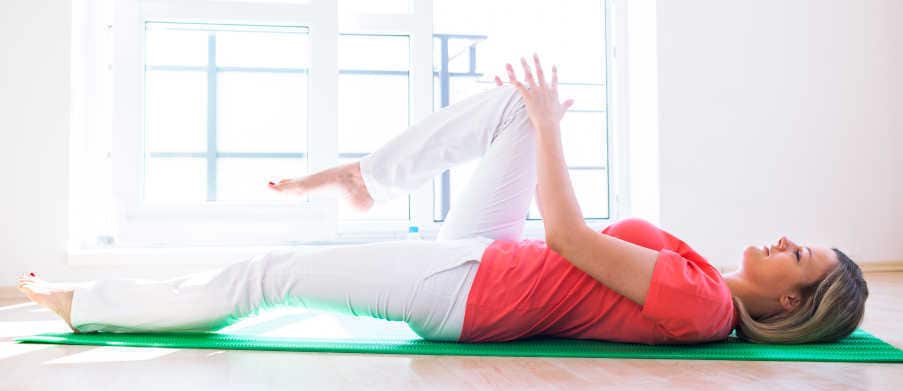home
all classes
fitness
one-to-one
schedule
classes
bookings
info
Online Yoga Classes
For A Healthy Back And Neck
Blog
The body’s main anti-stress mechanism, the vagus nerve mediates all rest and digest responses to help your mind and body rest and repair
Practicing yoga is a powerful way to activate your vagus nerve to calm stress and anxiety, soothe your aches and pains and reset all your body’s vital functions.
Through mindful postures, breathing exercises, and meditation techniques, you’ll be able to stimulate your vagus nerve and unlock its full healing potential
- Interactive classes, live on Zoom on UK time
- Wellbeing oriented yoga & mindfulness
- x6 max. participants for individual attention
- sessions are recorded for your personal-practice
Wed 7 – 8pm GMT
Sun 10:30 – 11:30am GMT
Suitable for all levels from beginners up

The Mind Body Connection: Finding Health In An Age Of Stress
What Is The Mind Body Connection?Since the intention of this blog is to explore the many facets, practices and benefits of natural health and healing, it seems apt to begin our journey with a discussion of a central pillar of natural healing: the mind body connection...
Schedule
Pricing
The Vagus Nerve And Yoga
The vagus is the main nerve responsible for rest-and-digest responses in your body
Vagal activity calms your heart and breathing, enhances digestion and resets all your vital functions. But rest isn’t doing nothing. Rest is a positive mental state of relaxed alertness associated with a felt sense of safety
Through movement, breath, guided imagery, and other yoga practices you’ll activate the vagus nerve to free your mind and body from tension and enjoy tranquility and greater health
Who Can Benefit?
Anyone looking to develop a better strategy for relaxation and stress management
With a top level of individual attention and support in small groups of 6 you can develop a personal practice to help you
- ease stiffness and pain
- regulate your blood pressure
- soothe irritable bowel & other digestive issues
- calm stress and tension
- improve your sleep
- boost your memory and brain power
- increase your energy, and much more …
Initial Assessment
While we can work effectively with many common stress-related symptoms, it’s essential that to rule out specific causes which may need medical attention
Before you join us please arrange your free 30 minute online assessment

How Will You Practice Yoga?
We take a functional approach to yoga, paying due attention to how the activities feel to you rather than just their outward appearance
Connecting with this inner alignment you can work within your own safe limits, while also reaching intelligently beyond your perceived limitations
Booking Instructions
1 – sign up with zoom and download the Zoom Client. Zoom is free to use
2 – contact me to arrange your free initial assessment
Book Your Class
Info: Yoga And The Vagus Nerve
Yoga postures that stretch or compress parts of the neck and abdomen are said to physically stimulate the vagus nerve
Though the jury is out on the significance – and duration – of such effects there is abundant evidence that yoga decreases arousal and stimulates rest-and-digest responses mediated through the Vagus
Browse the sections below to see how yoga breathing, movement, posture and mindfulness can help you harness the healing power of the Vagus Nerve
How does stress impact health?
Stress is one of the top predictors for injury
Perceiving something as stressful stimulates a flight-flight cascade to up-regulate your blood pressure, inflammation, pain sensitivity and many other vital functions
A healthy response is for your body to return to a baseline of rest and repair
Persistent arousal maintains inflammation with consequences ranging from blood vessel damage to tissue injury, anxiety and fatigue
Yoga helps you better cope with stressful events, activating the vagus nerve to reduce arousal, calm anxiety to let your body rest, reset and repair
Click the link for more in-depth information on the vagus nerve, stress and inflammation
What conditions can yoga help with?
The classes are an excellent way to manage a number of common back and neck pain syndromes, including non-specific low back pain, tension related neck and shoulder pain, and headache associated with tension or migraine
The commonest type, non-specific or mechanical low back pain, is particularly multi-factorial, being related to poor posture, inefficient body use and psychological stress. It is most often recurrent, and responds extremely well to yoga
Please contact Manuel for advice and assessment before signing up
How does the Vagus Nerve enhance my wellbeing?
The principle messenger for signals from the rest-and-digest parasympathetic nervous system, vagal activity slows the heart, stimulates digestion and generally helps your body replenish and repair
As the main pathway of the gut brain axis the vagus regulates not just digestion, but also your mood, immune responses, and other functions vital for life
As danger activates the fight-flight stress response, the Vagus is activated by a felt sense of safety
Yoga and mindfulness have been found to activate the vagus nerve, helping you access its calming and healing powers and restoring balance to your whole mind and body.
How Does Yoga Stimulate The Vagus Nerve?
There is plentiful and sound evidence that yoga and mindful-movement therapies activate the vagus
Though exercises that stimulate parts of the abdomen and neck may directly influence the vagus, the jury is out on how significant – and lasting – these effects are
On the other hand, physical – and mental – stillness can activate the vagus
Research shows that holding a comfortable pose for four to five minutes produces effects linked to increased vagal activity
Yoga brings you into intimate contact with your physical self, allowing your body to be nourished without any expectation of achievement
It is through the holistic practice of posture, movement, regulated breath and mindful attention that you can unlock the door to health and happiness
Mindful Yoga Breathing For The Vagus Nerve
Breath is one of the most direct ways to calm the mind and stimulate the Vagus
Yoga has traditionally used the breath to calm the mind and achieve stillness. Pranayama, or “control of vital air” is a key component of yoga practice: a number of different breathing techniques are used for developing physical and mental stillness
Slow mindful breathing, especially techniques which use the diaphragm, have been shown to reset your nervous system and activate the vagus nerve
Practicing mindful diaphragmatic breathing will help you activate the parasympathetic, rest and digest response, with a decrease in heart rate, blood pressure and heart-rate-variability, all factors used to measure vagal activity
Mindfulness meditation for Vagal activation
The nature of the mind is to think. The mind will not be emptied. But it can be filled. This is mindfulness, which means filling the mind with one thought – or basically paying attention
Yoga practice invites you to pay attention in in the same way you do when driving, reading, or enjoying a beautiful view. There is minimal effort and much enjoyment
All effort in yoga, mental and physical, is gentle. This is key to avoiding tension
Paying attention shows you how you think and how you use your body, providing a platform for new thought and movement habits that’ll keep healthy, pain free and resilient
LONDON CLAPHAM
The Light Centre
151-153 Clapham Hight Street
London SW4 7SS
Mob +44 7532671343
WhatsApp +44 7735448588
LONDON WALTHAMSTOW
East Of Eden
Studio 1, 14 Hatherley Mews
London E17 4QP
Mob +44 7532671343
WhatsApp +44 7735448588
SPANISH YOGA RETREAT
C/ De Mingo Ramos 22
10200 Trujillo (Ca)
Spain
https://spanishyogaretreat.com
Contact Manuel
